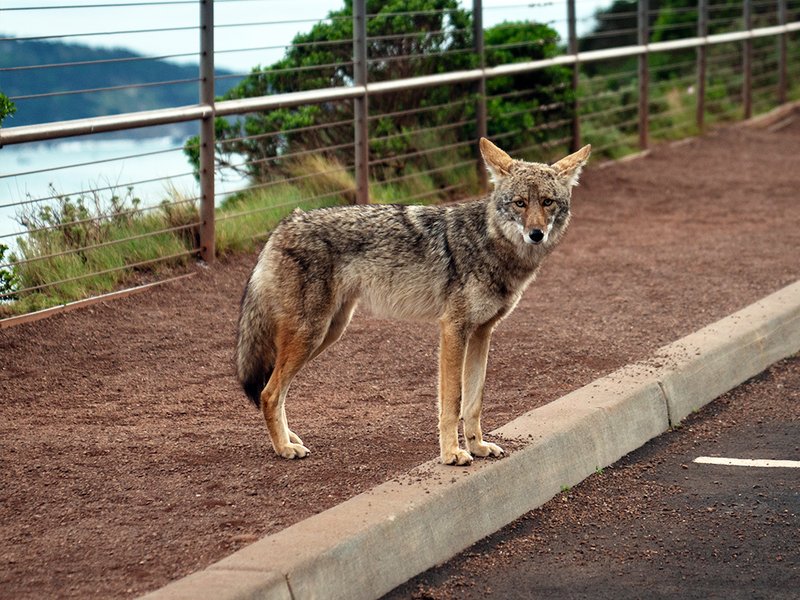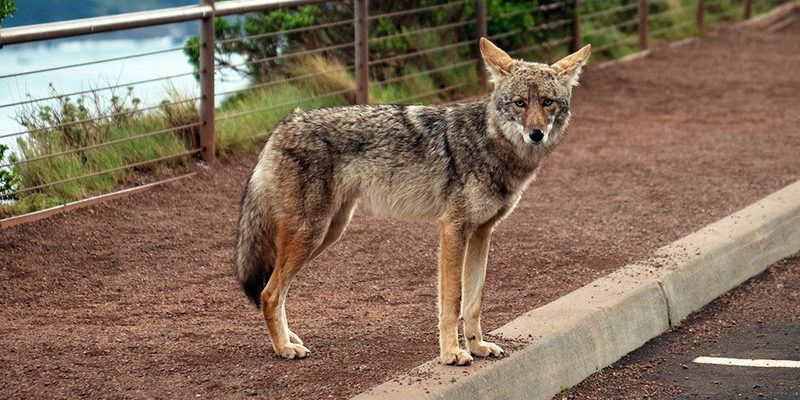
When we think about wild predators, coyotes can spark a mix of fear and curiosity. After all, they have sharp teeth and a reputation for being cunning. However, understanding their behavior and interactions with humans can help us appreciate them more while staying safe. You might picture them as a harmless part of nature, but there’s more to the story when it comes to their relationship with us.
Understanding Coyote Behavior
Coyotes are known for their social dynamics. They often travel in small family groups, which can create the illusion of pack behavior, similar to wolves. When you see them howling at dusk, it’s not just a call; it’s part of their communication. They use this vocalization to maintain social bonds and establish territory. You might be wondering how this affects their interactions with humans.
Here’s the thing: coyotes are generally wary of humans. They’ve evolved to see us as potential threats, and they usually avoid direct confrontation. That said, their behavior can change if they feel cornered or threatened. There have been rare instances of coyotes attacking pets or, occasionally, people if they perceive them as a threat or if they’re protecting their young. Understanding how coyotes typically behave can help you gauge how to act if you encounter one.
Are Coyotes Aggressive?
You might picture a coyote as a menacing figure ready to attack, but the reality is that they rarely show aggression toward humans. Most encounters with coyotes are more about curiosity than hostility. They are opportunistic animals, meaning they’ll often scavenge in areas where food is readily available, like garbage cans in suburban neighborhoods.
However, aggressiveness can arise in specific situations, particularly when they’re protecting their young or a food source. Think of it like a parent bear; you wouldn’t want to intrude too closely on a mother bear and her cubs. Similarly, if you see a coyote with its pups, it’s essential to keep your distance.
Real danger usually arises when coyotes become habituated to humans. If they start associating people with food, they may lose their natural wariness. This is why it’s crucial to manage garbage and pet food. Habituation can lead to bold behavior where coyotes might approach humans too closely, creating an uncomfortable—or dangerous—situation.
When Do Human-Coyote Conflicts Happen?
Conflicts between humans and coyotes typically occur in urban areas where their natural habitats overlap with human developments. Here are some common scenarios where interactions can become problematic:
- Food Scavenging: Coyotes attracted to trash or pet food left outdoors might show up more frequently, leading to bold behavior.
- Pets: Small dogs and cats can be seen as easy prey for coyotes, especially if left unsupervised outside.
- Territorial Encroachments: If their territory feels threatened, especially during breeding season, coyotes may become more defensive.
Being aware of these situations can help you take preventive measures. Keep your yard clean, supervise pets, and educate your community about coexisting with these wild creatures.
Preventing Conflicts with Coyotes
If you live in an area where coyotes are common, there are several simple steps you can take to reduce the chances of an encounter escalating. Here’s what you can do:
1. Secure Garbage: Ensure that trash is sealed in containers that coyotes can’t open.
2. Don’t Feed Them: Feeding coyotes, intentionally or accidentally, can lead to habituation. Keep pet food indoors and avoid leaving scraps outside.
3. Supervise Pets: Always keep small pets indoors or on a leash, especially during dawn and dusk when coyotes are most active.
4. Light Up Yard: Installing motion-activated lights can deter coyotes from approaching your property.
These strategies not only protect you and your pets but also help coyotes retain their natural fear of humans, promoting a healthier coexistence.
What To Do If You Encounter a Coyote
Encountering a coyote can be surprising, and it’s essential to know how to react. Here’s a quick guide on what to do:
– Stay Calm: Don’t panic; coyotes are usually more scared of you than you are of them.
– Make Noise: Yell, clap, or use a whistle. This can scare the coyote away.
– Stand Your Ground: Don’t turn your back or run; this can trigger a chase response.
– Back Away Slowly: If the coyote doesn’t leave, back away slowly while keeping an eye on it.
By following these steps, you significantly reduce the chances of a negative encounter.
Debunking Coyote Myths
There are plenty of myths floating around about coyotes that can cloud our judgment. Here are a few common misconceptions:
- Coyotes are aggressive: As mentioned earlier, they typically avoid humans unless they feel threatened.
- They are dangerous to children: While there have been incidents, they’re extremely rare, and proper precautions can minimize risks.
- Coyotes only live in the wild: They adapt well to urban environments and thrive where food and shelter are available.
Understanding these myths helps us view coyotes more accurately. They’re not mindless predators; they’re clever survivors adapting to a changing world.
In short, while coyotes can pose some risks, they rarely become dangerous to humans. By understanding their behavior and taking proactive measures, we can live side by side with these unique creatures peacefully. Building awareness and educating others can lead to a safer community for both us and the coyotes.
So, next time you hear that distinctive howl, remember: it’s just a coyote doing its thing in the world. Recognizing their role in the ecosystem reminds us that even the wildest creatures need space and respect to thrive—just like we do.

